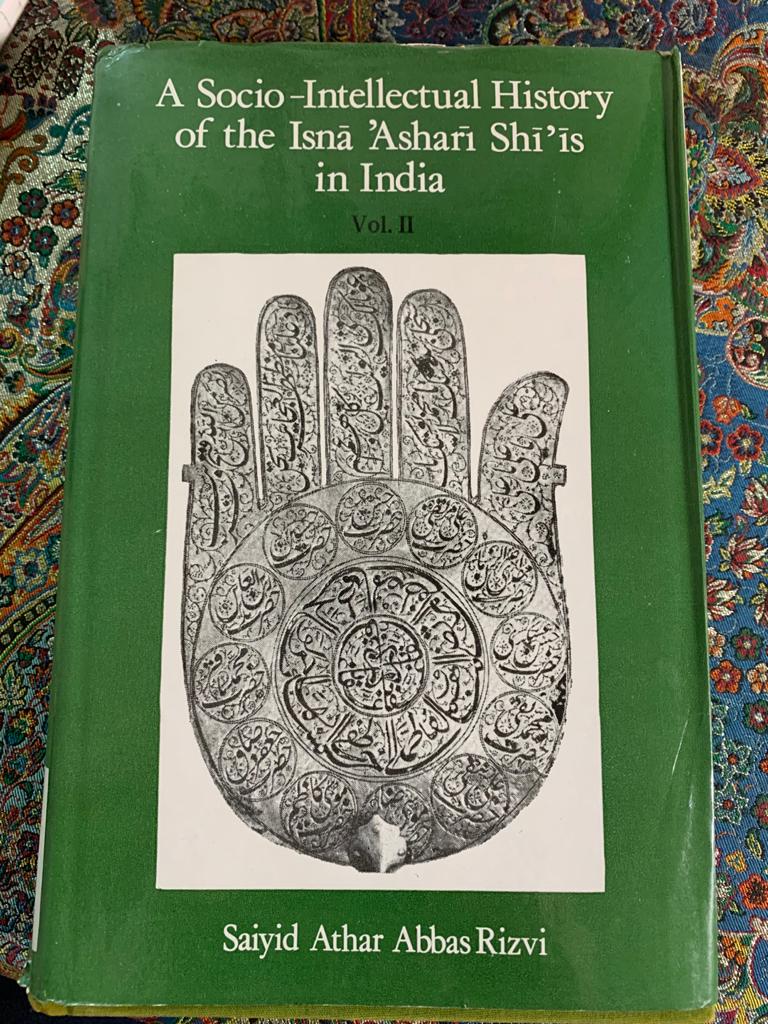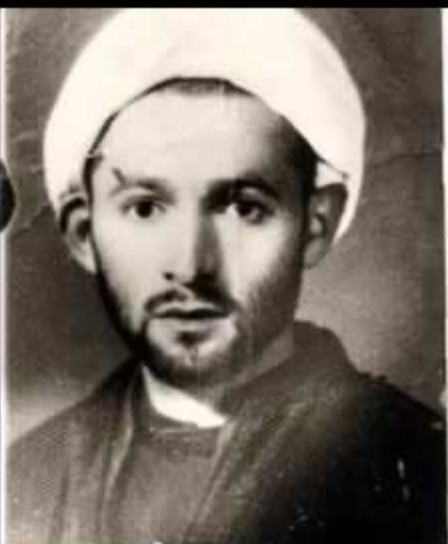#manuscripts this is a copy of Sayyid Muḥammad ʿAbbās al-Jazāʾirī work on #epistolatry #inshāʾ in Arabic and Persian entitled al-Ẓill al-mamdūd - MS Marʿashī (Qum) 6644 - a short thread on him #ShiiIntellectualHistory #NorthIndia 1/ 







The #intellectual_history of the #Shiʿa in North India was covered well by the late Saiyad Athar Abbas Rizvi and he devotes a few pages to him in vol 2 2/ 



Justin Jones in his book on #Shiʿi politics in colonial North India also discusses him briefly 3/ 



Sayyid Muḥammad ʿAbbās b. ʿAlī Akbār al-Jazāʾirī represents (in the memory of his son Aḥmad ʿAlī (d. 1969) and grandson Sayyid Ṭayyīb (d. 2015)) the idea of a scholarly golden age and interconnected world of #Shiʿi literature of scholarship #Arabic #Persian and #Urdu 4/
Many still around remember Ṭayyib āghā his grandson who was a well known preacher internationally and would often sprinkle his sermons with tales of his grandfather (whom he never met) - I have memories of him as well as we hosted him a number of times in London 4a/
It harks back to a time of the last days of the #Avadh nawābī and the centrality of #Lucknow culture to identity, etiquette and intellectual and literary pursuits for the #NorthIndian #Shia 5/
Sayyid Muḥammad ʿAbbās was born in Lucknow in 1809 into a well known family that traced their descent in 4 generations back to Sayyid Niʿmatullāh al-Jazāʾirī (d. 1701), a famous student of Majlisī (d. 1699) from the borderlands of Iran and Iraq #Shūshtar 6/
The family included the Marʿashī rulers of Māzandarān and their descendant (founder of the library in Qum) Sayyid Shihāb al-Dīn (1897-1990)7/ 

the judge and #ThirdMartyr Sayyid Nūrullāh (d. 1610) buried in Agra 7/
and Sayyid ʿAbd al-Laṭīf (1758-1806) author of travelogue Tuḥfat al-ʿālam - so an important #transnational #Shii family between Iraq, Iran and South Asia - check these sources 8/ 





Sayyid Muḥammad ʿAbbās grew up at least trilingual - he later wrote poetry in Arabic Persian and Urdu a number of exemplars which survive (and two Dīvāns) - here is some of the Arabic poetry 9/ 



The hagiographies mention him writing his first masnavi in Persian Man u salwā aged 14; his Arabic dīwān was called Raṭb al-ʿarab and the Persian Yad-e bayżāʾ and both were lithographed in Lucknow 10/
His command of the languages - which perhaps is due to lineage and the use in the family - is perhaps remarkable as he never studied in the shrine cities of Iraq or in Iran - but he did correspond with the leading figures 11/
He was prolific - his Arabic #Qurʾan exegesis Rawāʾiḥ al-Qurʾān was lithographed in 2 vols in Lucknow in 1893 a few years after his death and his Arabic work off hadith Manābir al-islām was also lithographed 12/
As he was appointed a teacher at the Madrasa-ye Shāhī in Lucknow and as muftī of the nawābī 1845-1856 he is best know as Muftī Muḥammad ʿAbbās and his works in #ShiiLaw were also published - al-sharīʿa al-gharrāʾ and a marginalia on al-Lumʿa al-Dimashqīya 13/
He also was one of the founders - along with Sayyid Abūʾl-Ḥasan Riżvī (1844-1895) of the Niẓāmīya Madrasa in Lucknow in 1889 just months before he died 14/
He is known for having been a student of Sayyid al-ʿulamāʾ Sayyid Ḥusayn b. Sayyid Dildār ʿAlī (1796-1856) on whom he wrote a major biography (Awrāq al-dhahab) which illuminates much about the scholarly world of #Lucknow 15/ 

This modern edition of the work is remarkably useful as it includes the correspondence and #ijāzāt of all these major figures - here is one that Muftī Muḥammad ʿAbbās issued to a student Sayyid Aḥmad Ḥusayn (d. 1910) in 1848 16/ 





His best known student was Sayyid Aḥmad Ḥusayn's nephew Sayyid Najm al-Ḥasan Amrohī (1863-1938) who later became the rector of the Nāẓimīya and also along with the #RajaMaḥmūdābād founded Madrasa al-wāʿiẓīn in 1919 for missionary work in defence of #ShiiIslam 17/
Muftī Muḥammad ʿAbbās lived through the annexation and occupation of #Avadh and is an important witness to the changes from that old #Mughal elite context to the #colonial and played a role in trying to help #Avadh deal with the later 18/
A study of him would be useful to show how the transational connections of the #Shii elite and learned classes working within the #AraboPersianCosmopolis had to negotiate the realities of the new colonial presence while retaining their traditional networks 19/
• • •
Missing some Tweet in this thread? You can try to
force a refresh


















